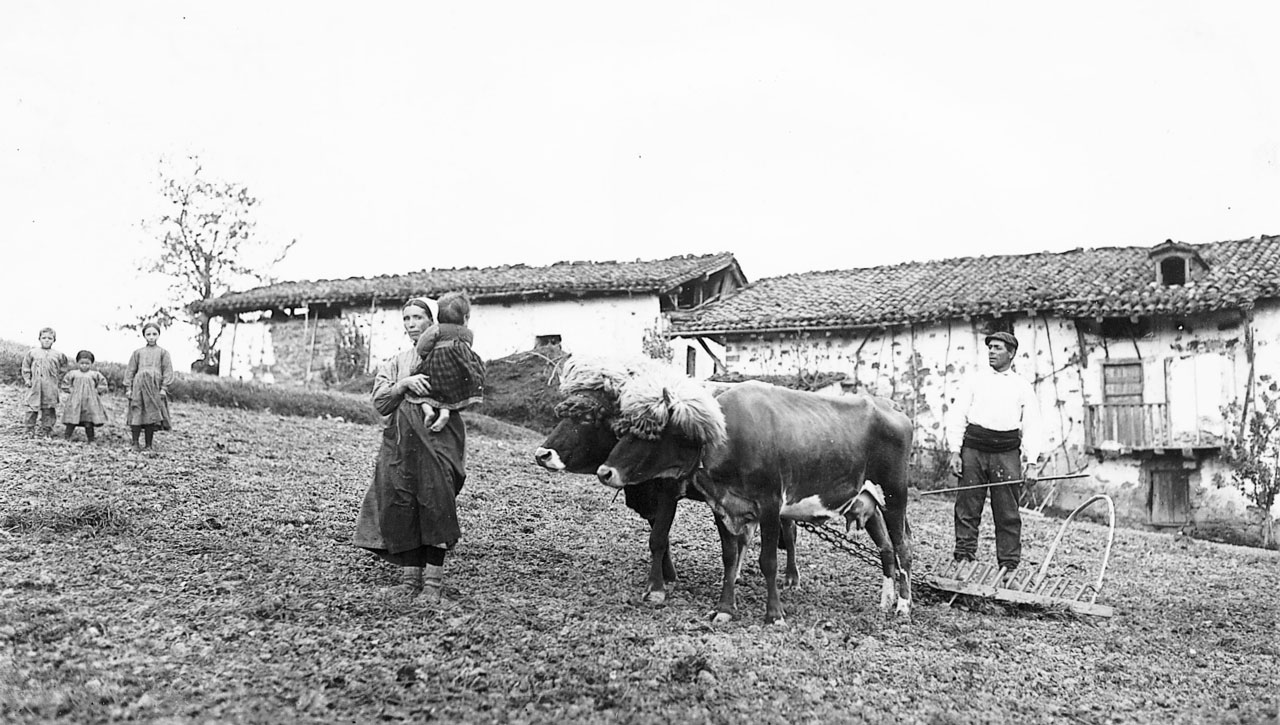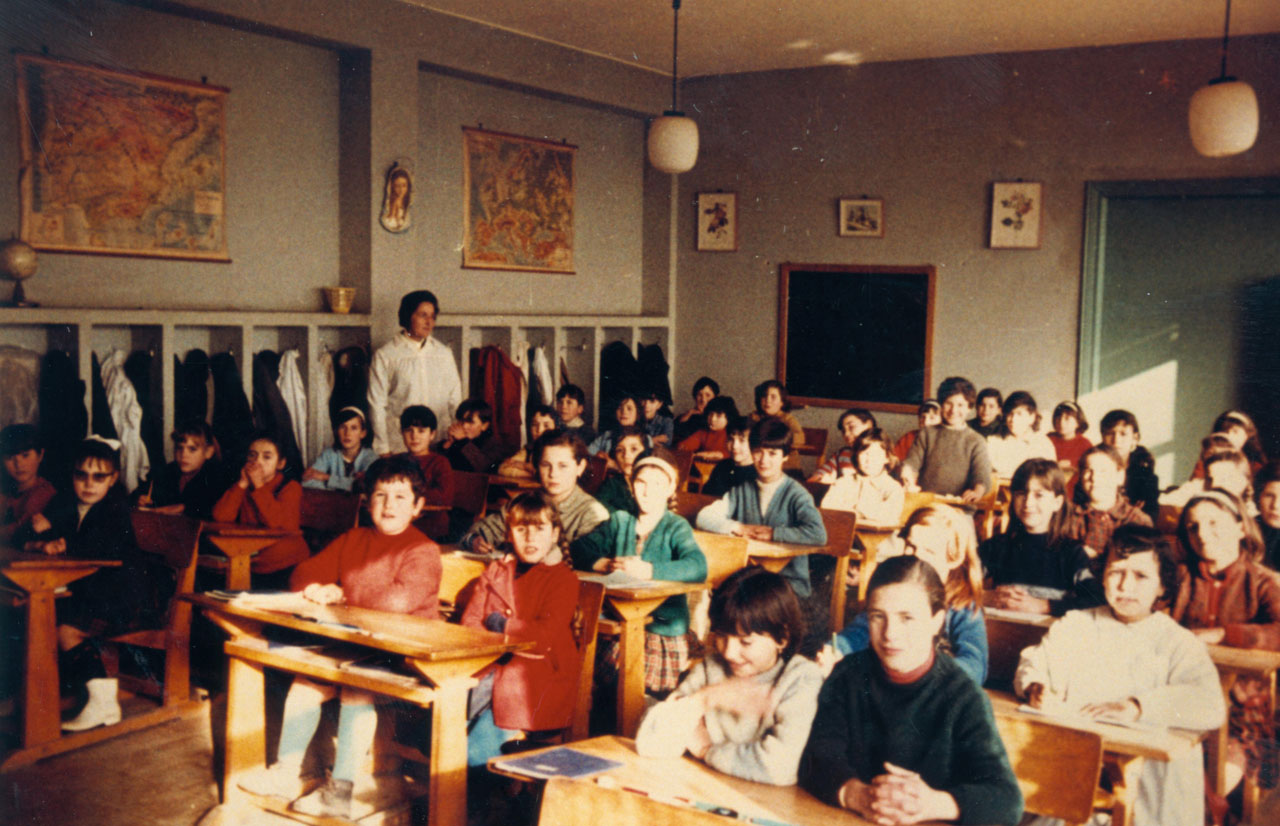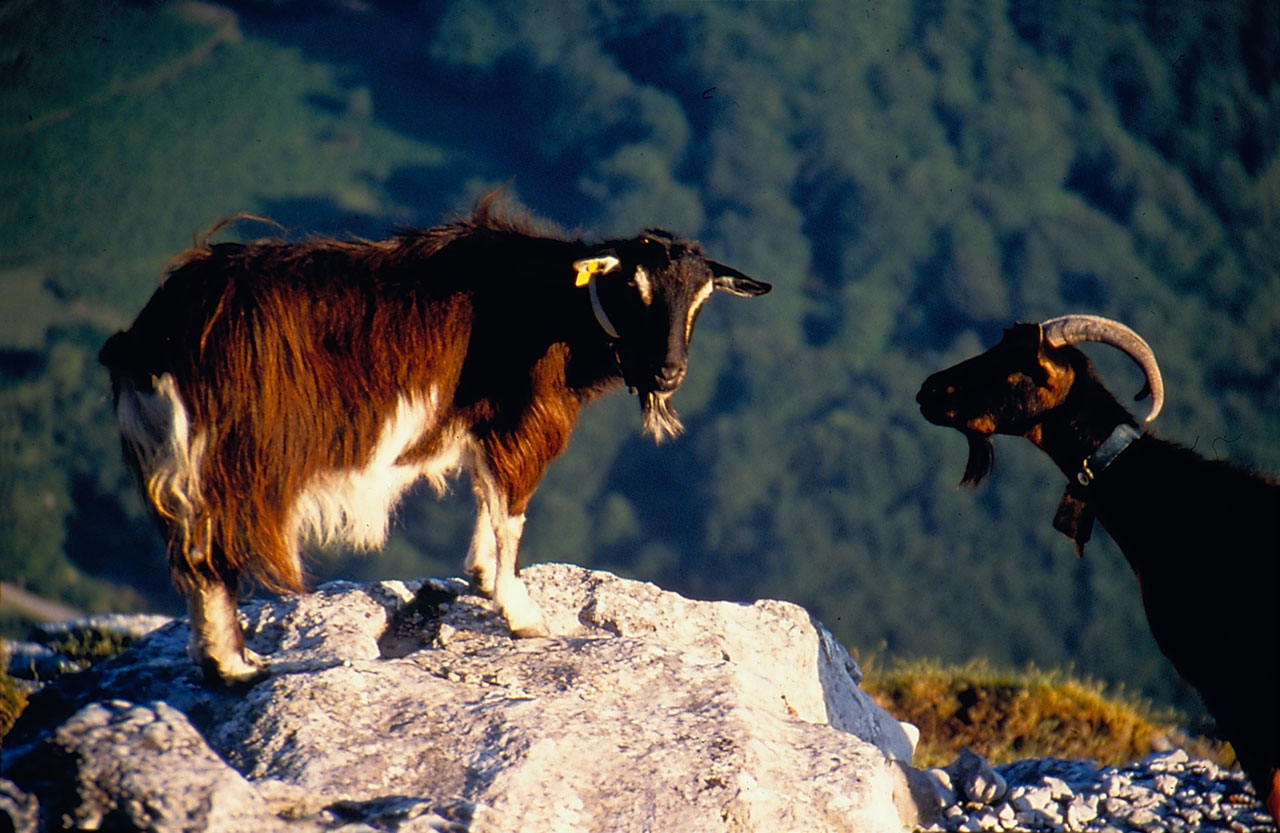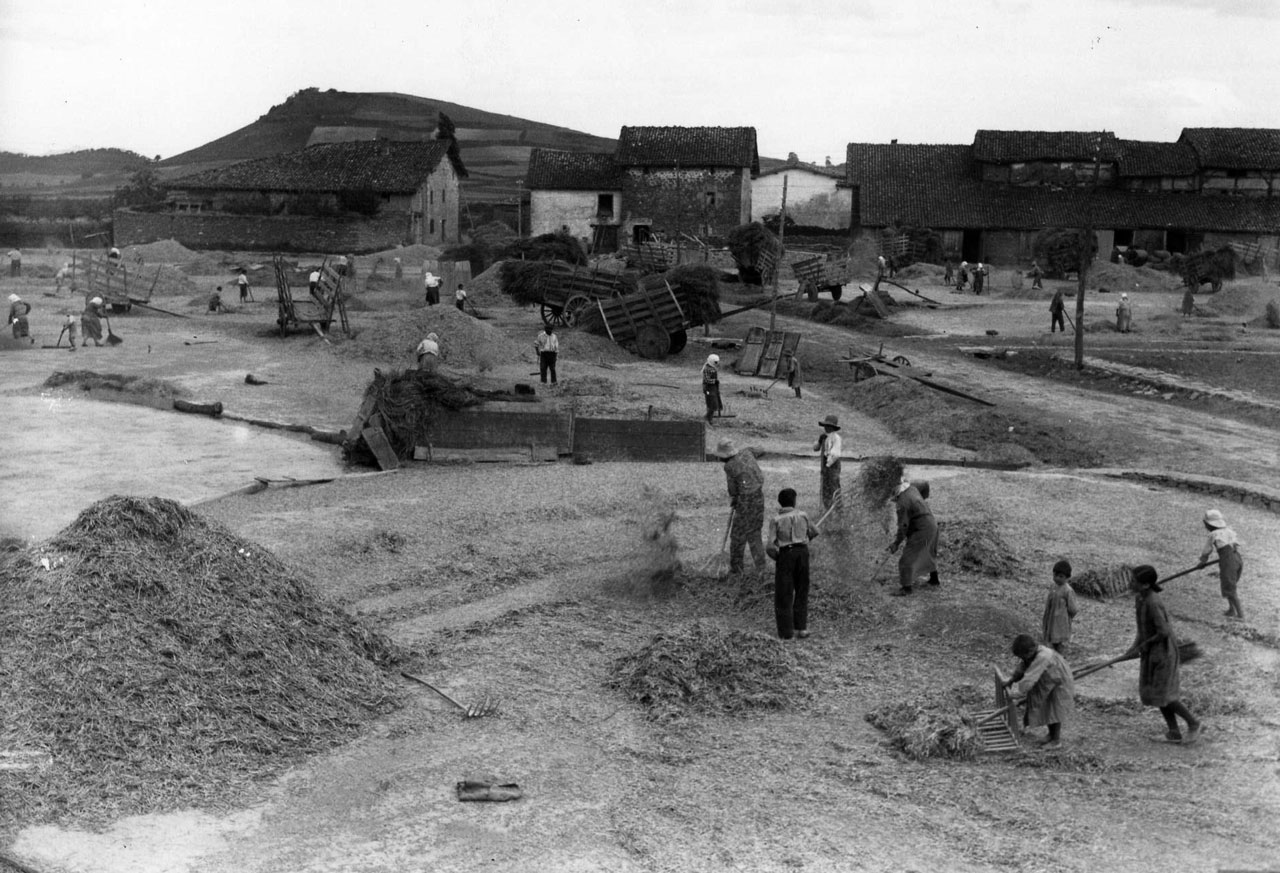Diferencia entre revisiones de «Main Page/en»
De Atlas Etnográfico de Vasconia
| Línea 218: | Línea 218: | ||
====[/atlas/ganaderia/Pastando-en-Eneabe-Zeanuri-1996.jpg|Grazing in Eneabe. Zeanuri (B), 1996. Source: Labayru Fundazioa Photograhic Archive: José Ignacio García Muñoz.|Two millennia ago Pliny distinguished Vasconum saltus, humid and wooded, from Vasconum ager, with its grain fields and vineyards. That distinction still remains today, with regard to livestock farming.|]==== | ====[/atlas/ganaderia/Pastando-en-Eneabe-Zeanuri-1996.jpg|Grazing in Eneabe. Zeanuri (B), 1996. Source: Labayru Fundazioa Photograhic Archive: José Ignacio García Muñoz.|Two millennia ago Pliny distinguished Vasconum saltus, humid and wooded, from Vasconum ager, with its grain fields and vineyards. That distinction still remains today, with regard to livestock farming.|]==== | ||
| − | ====[/atlas/ganaderia/Pastor-de-Lanciego-subiendo-a-Tolono-1996.jpg| | + | ====[/atlas/ganaderia/Pastor-de-Lanciego-subiendo-a-Tolono-1996.jpg|Shepherd from Lanciego (A) on the climb to Toloño, 1996. Source: José Ángel Chasco, Etniker Euskalerria Groups.|The Mediterranean watershed of the Basque Country was, and to a large extent is, characterized by the importance of the commons, the communal character of their exploitation by associations and brotherhoods comprising multiple municipalities still persisting today.||ENLACE]==== |
| − | ====[/atlas/ganaderia/Establo-de-ovejas-moderno-Izurtza-2000.jpg| | + | |
| − | ====[/atlas/ganaderia/Oveja-negra-en-el-rebano-Meaga-Getaria.jpg| | + | ====[/atlas/ganaderia/Establo-de-ovejas-moderno-Izurtza-2000.jpg|Modern stable for sheep. Izurtza (B), 2000. Source: Labayru Fundazioa Photograhic Archive: José Ignacio García Muñoz.|The transformations that have taken place in the last few decades have fundamentally changed the world of livestock farming: no longer a way of life, it is now an economic activity.||ENLACE]==== |
| − | ====[/atlas/ganaderia/Cabras-con-cencerros-Anboto-1999.jpg| | + | |
| − | ====[/atlas/ganaderia/Pastor-con-kapusai-Eriete-1959.jpg| | + | ====[/atlas/ganaderia/Oveja-negra-en-el-rebano-Meaga-Getaria.jpg|Black sheep in the flock. Meaga, Getaria (G). Source: Antxon Aguirre, Etniker Euskalerria Groups.|A black animal, and particularly a billy goat, was considered to protect the herd, flock or barn throughout the area surveyed.||ENLACE]==== |
| − | ====[/atlas/ganaderia/Bendicion-del-rebano-antes-de-la-partida.jpg| | + | |
| − | ====[/atlas/ganaderia/Esquilando-ovejas-por-el-sistema-tradicional-Carranza-1998.jpg| | + | ====[/atlas/ganaderia/Cabras-con-cencerros-Anboto-1999.jpg|Goats wearing bells. Anboto (B), 1999. Source: Labayru Fundazioa Photograhic Archive: José Ignacio García Muñoz.|Cowbells, in the same way as chimes, have been attributed with the power to protect the livestock from spells. Their use to protect against the evil eye, begizkoa, was very widespread in the past.||ENLACE]==== |
| − | ====[/atlas/ganaderia/Subida-al-monte-Aia-1998.jpg| | + | |
| − | ====[/atlas/ganaderia/Dolmen-de-Gaxteenia-Mendibe-1980.jpg|Dolmen | + | ====[/atlas/ganaderia/Pastor-con-kapusai-Eriete-1959.jpg|Shepherd wearing a cape. Eriete (N), 1959. Source: Archive of the Museum of Navarre: Nicolás Ardanaz Collection.|Nolako artzaina, halako artaldea. <br />''Every animal ends up looking like their master.''||ENLACE]==== |
| − | J. M. Barandiaran||ENLACE]==== | + | |
| − | ====[/atlas/ganaderia/Pastos-en-Carranza-2009.jpg| | + | ====[/atlas/ganaderia/Bendicion-del-rebano-antes-de-la-partida.jpg|Blessing of the flock before departure. Source: Antxon Aguirre, Etniker Euskalerria Groups.|Artaldearentzat artzain guti hobe ainitz baino. <br />''Too many cooks spoil the broth.''||ENLACE]==== |
| − | ====[/atlas/ganaderia/Vacas-en-prados-comunales-Carranza-2007.jpg| | + | |
| − | ====[/atlas/ganaderia/Pastor-y-espaldero-Canada-de-los-Roncaleses-1996.jpg| | + | ====[/atlas/ganaderia/Esquilando-ovejas-por-el-sistema-tradicional-Carranza-1998.jpg|Traditional sheep shearing. Carranza (B), 1998. Source: Miguel Sabino Díaz, Etniker Euskalerria Groups.|Grullas p’arriba, pastor buena vida, <br />Grullas p’abajo, pastor más trabajo.<br /><br />''When cranes fly north, life is easier for shepherds, <br />when they fly south, work is harder for shepherds.''||ENLACE]==== |
| + | |||
| + | ====[/atlas/ganaderia/Subida-al-monte-Aia-1998.jpg|Climb to the mountain. Aia (G), 1998. Source: Antxon Aguirre, Etniker Euskalerria Groups.|At the end of the Middle Ages, flocks in the Basque valleys converged on the same mountains that are now the main summer grassland used for grazing.||ENLACE]==== | ||
| + | |||
| + | ====[/atlas/ganaderia/Dolmen-de-Gaxteenia-Mendibe-1980.jpg|Dolmen of Gaxteenia. Mendibe (NB), 1980. Source: Blot, Jacques. Artzainak. Les bergers basques. Los pastores vascos. Donostia: Elkar, 1984.|“The axial zone of the Basque Pyrenees retains underneath a maze of folds traits of a time-honoured culture.” <br />''J. M. Barandiaran''||ENLACE]==== | ||
| + | |||
| + | ====[/atlas/ganaderia/Pastos-en-Carranza-2009.jpg|Grassy pastures in Carranza (B), 2009. Source: Luis Manuel Peña, Etniker Euskalerria Groups.|The priority of the right of herds to cross arable land is expressed in the sentence: ''soroak zor dio larreari'' ‘arable land is indebted to grassland’.||ENLACE]==== | ||
| + | |||
| + | ====[/atlas/ganaderia/Vacas-en-prados-comunales-Carranza-2007.jpg|Cattle on common pastures. Carranza (B), 2007. Source: Luis Manuel Peña, Etniker Euskalerria Groups.|Communities in areas where livestock has been the fundamental basis of their way of life consider Saint Anthony Abbot as the main protector of the health and fertility of the animals.||ENLACE]==== | ||
| + | |||
| + | ====[/atlas/ganaderia/Pastor-y-espaldero-Canada-de-los-Roncaleses-1996.jpg|Herder and dog. Droveway of the Roncalese (N), 1996. Source: Iñaki San Miguel, Etniker Euskalerria Groups.|The introduction of sheepdogs meant they replaced the zagales, young children who had been in charge of herding the flock up to then.||ENLACE]==== | ||
Revisión del 12:44 27 ene 2020
Mutual cooperation. Zeanuri (B), c. 1915. Source: Labayru Fundazioa Photograhic Archive: Felipe Manterola Collection.
House and Family in the Basque Country


House and Family in the Basque Country
The rural farmstead was an institution made up of the building, its land, its dwellings and by tradition, in other words, by that web of relations that closely links the current generation with past ones.
Family Diet in the Basque Country


Family Diet in the Basque Country
Food was grown on the family small holding or bought from local markets, which, in turn, were supplied with food grown locally. A few products, nearly always non-staples, complemented local or household self-supply.
Children’s Games in the Basque Country


Children’s Games in the Basque Country
Txikia banintzen, handia banintzen, maiatzerako burutu nintzen. Riddle
Traditional Medicine in the Basque Country


Traditional Medicine in the Basque Country
Ona da ardaoa, kentzeko burutik beherakoa. Treat a cold with a hot toddy.
Rites from Birth to Marriage in the Basque Country


Rites from Birth to Marriage in the Basque Country
Maritxu-teilatuko, gona gorriduna, eutsi hagin zaharra ta ekarzu barria. Popular recitation
Funeral Rites in the Basque Country


Funeral Rites in the Basque Country
Each homestead used to have a burial site inside the church’s nave. When burials were transferred to cemeteries, the once real burial site in church became a symbolic family grave, were offerings of light and bread were made to their dead.
Goats wearing bells. Anboto (B), 1999. Source: Labayru Fundazioa Photograhic Archive: José Ignacio García Muñoz.
Ganaderia y pastoreo en Vasconia


Ganaderia y pastoreo en Vasconia
Cowbells, in the same way as chimes, have been attributed with the power to protect the livestock from spells. Their use to protect against the evil eye, begizkoa, was very widespread in the past.
Agricultura en Vasconia


Agricultura en Vasconia
Elur asko den urtean, garia; eta erle asko dugunean, eztia. Año de nieves, año de bienes.








